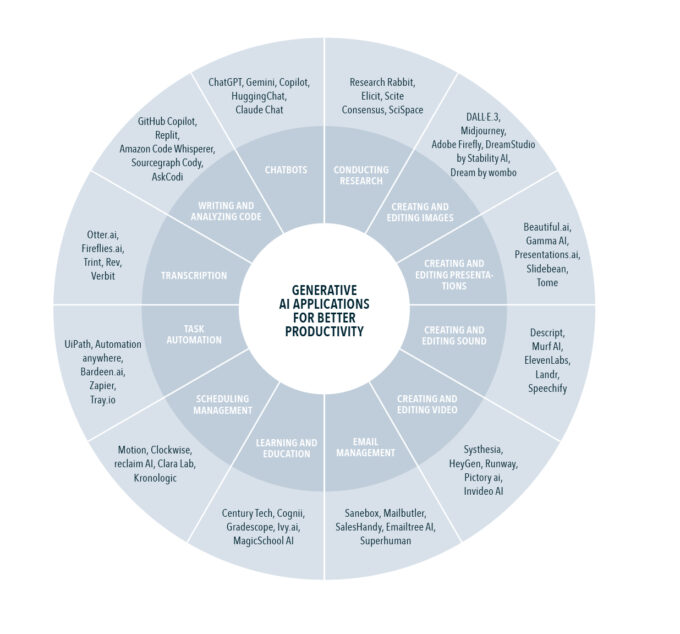5. Environmental impact versus efficiency gains
The environmental impact is one often overlooked tension in the debate around GenAI adoption. These models have a huge appetite for computing power, both during training and for inference, when the trained systems are put into action, meaning they consume vast amounts of electricity and water.
Hugging Face reported that its BLOOM model consumed 433 megawatt hours of electricity during training – enough to power 40 average American homes for a year. Another scientific analysis found that Google would need as much power as Ireland if it used ChatGPT for its search engine. Muddying the waters is the fact that the exact CO2 emissions of GenAI are difficult to calculate – due to a lack of transparency among Big Tech about their actual footprint.
GenAI requires vast amounts of water to cool down the data centers that run models. According to one estimate, Gen AI needs the equivalent of one 16oz (475ml) bottle of water for every 5-50 interactions. Another study predicted that by 2027, global AI demands may use more water than some countries do in a year. This is a serious problem, as freshwater is becoming a scarce resource due to population growth, water depletion, and outdated water infrastructure. GenAI also consumes a lot of hardware, which uses rare earth elements that must be mined and transported. With pressure growing on companies to monitor and report their direct and indirect carbon emissions, the environmental impact of GenAI is something they cannot afford to ignore. Many firms have made bold public net-zero commitments in recent years. A massive scaling of GenAI applications across their organizations could jeopardize these targets.
On the flip side, if GenAI makes us more productive and efficient, it could lower the environmental impact whilefinding new ways for companies to become more sustainable – even finding solutions to mitigate its own footprint. For instance, Microsoft and the Pacific Northwest National Library have recently uncovered a new material – with the help of AI and supercomputing – that could replace lithium, the finite resource used in everything from electric vehicles to mobile phones. The technology also might help firms with their ESG reporting, for example, by calculating carbon footprints. Some firms are looking at how to creatively reuse the heat generated by data centers, such as to heat local homes or water systems. So, how can organizations offset this tension between damaging the environment and increasing organizational productivity?
Companies can adopt several strategies to use GenAI more responsibly and efficiently. For example, they can choose vendors that source their electricity from renewable sources and look to fine-tune existing models rather than building their own, which is more energy-intensive. Furthermore, they should adjust the amount of training needed depending on the accuracy required for the task. For use cases where accuracy is not so critical, less training may be required.
We recommend: Ensure that sustainability is one of your key AI principles. Educate your organization about AI’s footprint and prioritize the measurement of resource consumption. With this transparency in mind, strive to consistently reduce the harmful impact of AI on the environment.
There is little doubt that the pressure to adopt AI-enabled technologies to maintain a competitive advantage will continue. Companies will need to navigate this adeptly and deal with other strategic tensions, using skills they already have and new muscles they will need to develop.
As the technology matures, some existing problems, such as data bias, will likely diminish. Regardless of the challenges, by defining a set of AI principles and a clear strategic approach, organizations will be more equipped to make decisions about which trade-offs to make and which innovations to invest in to ensure that AI is used to generate real value for your business and society.


 Audio available
Audio available









